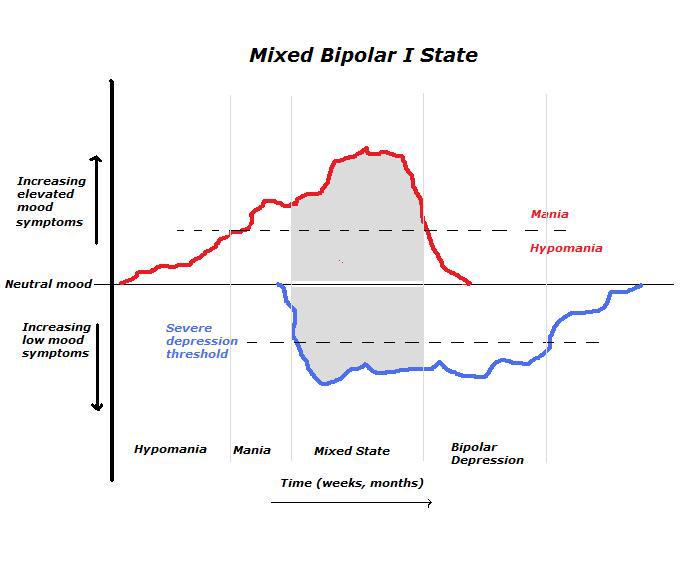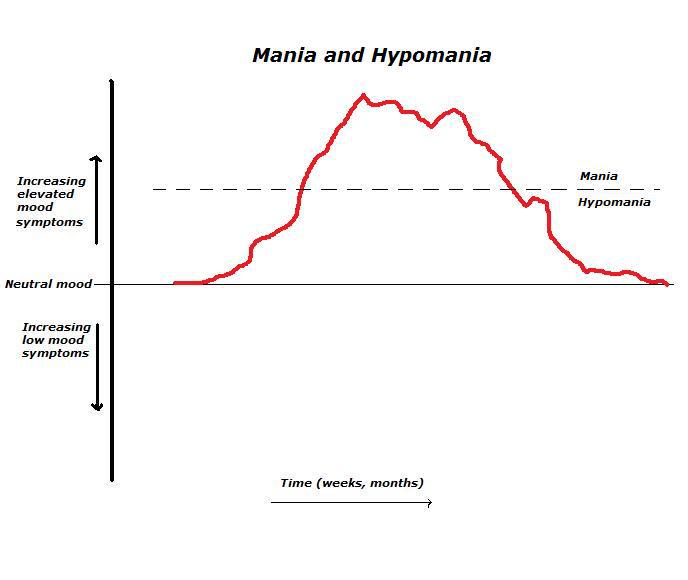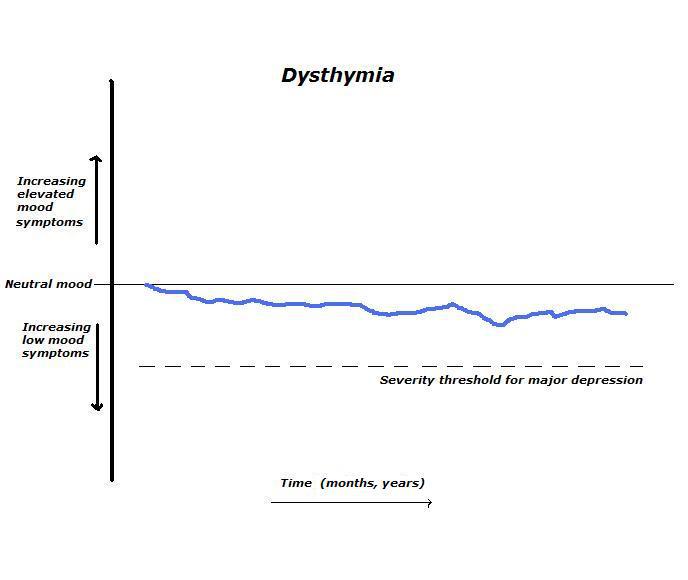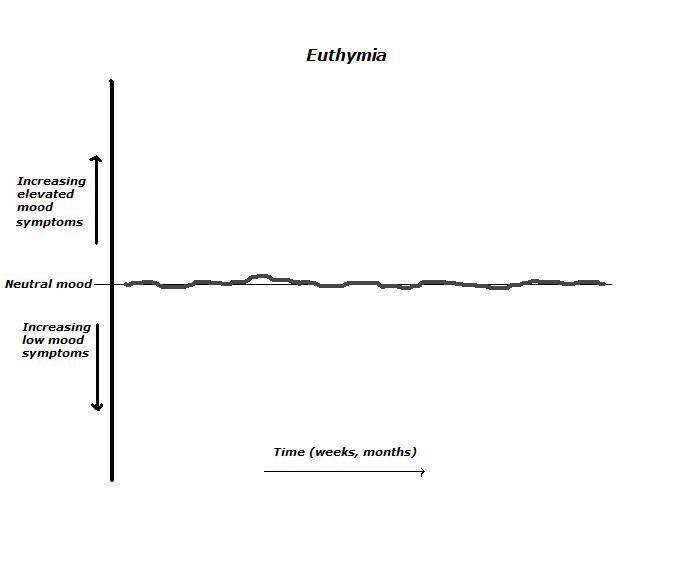Mixed Bipolar States
In these common but underrecognized bipolar states, both manic symptoms and a full syndrome of depression are present at the same time. In clinical practice, pure bipolar depressive states and pure manic states are likely less common than mixed states, where significant elements of both states are present simultaneously.




